The Batman: Arkham Trilogy on Nintendo Switch should never have shipped in this state
Asylum and City have unexpected problems, Knight is an unmitigated disaster.
Rocksteady's Batman: Arkham titles are some of the best superhero games of all time. The trilogy - Arkham Asylum, Arkham City, and the spectacular Arkham Knight - are polished and beautiful action games. Their recent Switch ports, however, seem a little curious. The first two titles make sense, as PS3/Xbox 360-era games, but Arkham Knight was a boundary-pushing PS4/Xbox One title with visuals that require careful retooling to run effectively on Nintendo's low-power hybrid console. As you might have grasped from the headline, that hasn't happened with the Arkham Trilogy release - so what exactly went wrong and how do the two less-demanding titles hold up in comparison?
Let's start with Batman: Arkham Knight - which is an unmitigated disaster on Switch. There are a lot of problems here but performance is by far its biggest flaw. In broad strokes, we're looking at sub-30fps frame-rates with near-constant drops, especially during open-world traversal. Readouts in the 20-25fps region are common as we glide above the city, with frame-rates stabilising somewhat once we're on the ground.
Looking at the frame-time graph, it's clear that frame delivery is highly variable with frequent stutters over 100ms - so the game feels subjectively worse than the average frame-rate would indicate. We even saw Batman momentarily jerk back in our footage every so often as the frame-rates drop, which seems to be a byproduct of the camera continuing to move while Batman remains stationary for a frame. It feels a lot like the rubber-banding effect players of some online multiplayer games might have experienced, like in older Battlefield titles.
It gets worse too. When you enter the Batmobile and engage in a high-speed chase, the game takes an even bigger frame-rate tumble, with a wildly inconsistent frame-time readout. Arkham Knight is legitimately quite challenging to play here with all of the constant stuttering. It's hard to express how poor the game actually feels to control - even a locked 20fps, for instance, would feel worlds better than this. I suspect the game's streaming systems are causing serious issues here.
That's not all - we also recorded occasional super-high frame-time spikes that can last for over two seconds. These pop up pretty regularly if you just drive around the city for a bit, really pulling you out of the experience. The game sometimes hangs at 0fps indefinitely, or at least it does when it crashes, which happened twice over the time I played Arkham Knight. The game needed to be manually closed which took a while. These glitches are a painful reminder of the game's basic instability.
Some sections of the game do run more acceptably. On-foot gameplay can sometimes hit and hold 30fps for extended periods, and indoor areas tend to run a bit better as well, though these can suffer from substantial frame-rate issues at times. Basically, if you haven't got much of the city in view and you aren't moving very quickly, there's a decent chance you'll be at or near 30fps, but a lot of Arkham Knight's gameplay is just the opposite.
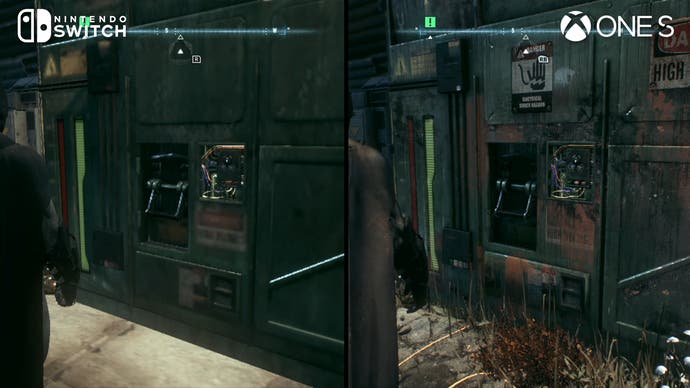
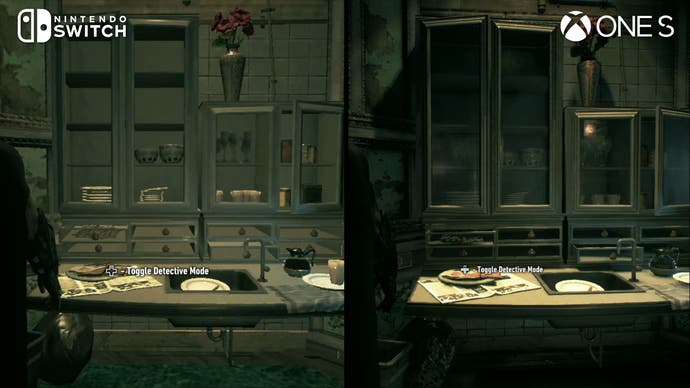
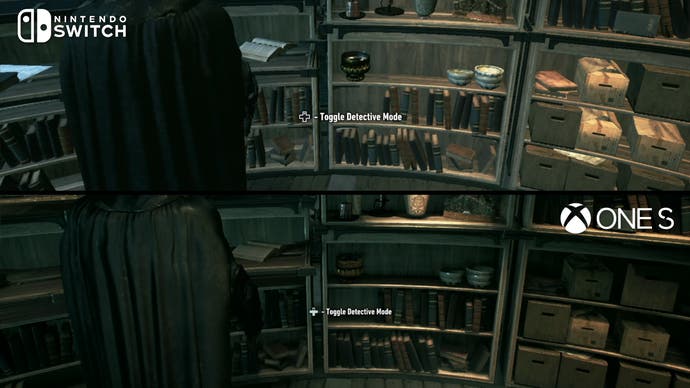
Even if Arkham Knight was a visual match for its home console counterparts, its performance would render it impossible to recommend. But unfortunately there are a wide range of graphical cuts here relative to last-gen home consoles too, which make it an unattractive game as well as a jerky one.
This loss of fidelity is broadly evident, but focusing on the micro detail is a good place to start. Looking at a single electrical panel versus the game running on Xbox One S, texture resolution is hugely degraded, we lose the high voltage and danger indicators and the reddish grime, and the material properties are simplified, without a specular sheen. The ground textures beneath are greatly pared-back as well and all grass has been removed. It makes for a game that's barely recognisable as Arkham Knight.
If we look instead at a glass cabinet, it's clear that almost all of its lighting detail has been lost, with zero shadowing whatsoever, while the glass itself appears totally transparent on Switch, a simplification which makes some scenes look distinctly strange. There are truly vast lighting differences, stripped-back material properties and ambient occlusion has been completely removed on Switch too.
Obviously, the Switch version looks much worse in these comparisons - but critically I think it just no longer looks much like Arkham Knight. The moody, mechanical world of Gotham loses a lot of its character when most of the lighting detail is stripped out and textures and materials are harshly decimated.
A lot of the same concessions are evident at a distance too. I noticed extremely low-resolution textures and pared-back distant geometry; distant views of Gotham are even blocked off with rows of simplified tall buildings. Driving through the city results in severe pop-in as a result of these level of detail (LOD) compromises. Looking down at street level, there's far less enemy commotion and traffic than before as well, which probably saves valuable CPU cycle, while the clouds in the sky have been greatly simplified too. The bat signal texture remains, albeit at a laughably low resolution. Finally, rain is present and actually looks OK, but its volume has been reduced compared to Xbox One.
Cutbacks are also obvious in characters and cutscenes, with more basic models that lack much of the detail that we see on last-gen systems. These characters also have crude blob shadows rather than true shadowmaps. Cutscene sequences have been cropped in somewhat too, again likely to claw back some performance.
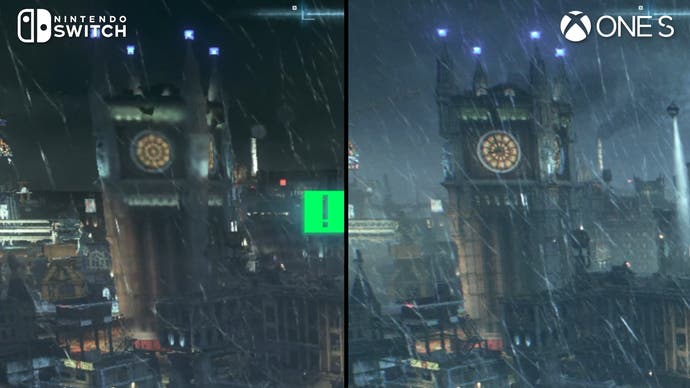
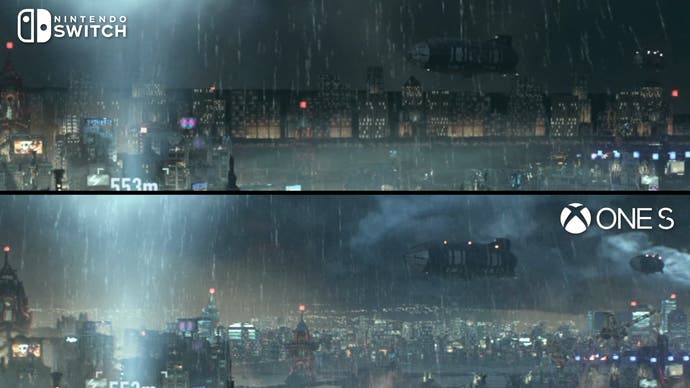
The roiling finely-tessellated waves in Arkham Knight looked brilliant on last-gen home consoles but unsurprisingly have been replaced by more performant normal map trickery instead. Post-processing is reduced across the board too, with less-defined depth of field and completely missing motion blur - with the latter being a definitive effect for the game, especially during high-speed traversal. You'll also notice that destructible elements often simply pop out of existence when hit while driving, with none of the debris shown on last-gen consoles.
As a final note, some optimisations have had a serious impact on gameplay. For example, a minigame that requires you to aim radio and microwave receivers to identify a location on the map is basically unplayable as the graphics showing the receivers are pointing in are totally gone. This turns a simple game on Xbox One into one you can only solve by blind chance on Switch. This kind of issue really shouldn't have passed QA.
Resolution-wise, we're looking at a fixed 810p resolution in docked play, which compares reasonably well against the 900p image on Xbox One. There's no anti-aliasing on Switch, so it does tend to look somewhat rough around the edges. Image quality isn't great on Switch, but the game has bigger issues. It's a similar story in portable mode, with subjectively similar performance and settings, except for resolution which drops to 540p. The smaller screen means that the game fares ever-so-slightly better as a portable experience, though it's still in poor shape.

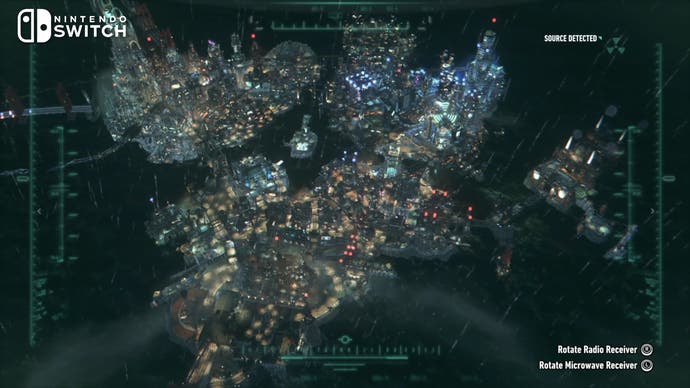
With Arkham Knight out of the way, it's time to look at the older vintage titles in the trilogy: the PS3/360-era Arkham Asylum and Arkham City, which seem like a more natural fit for the Switch. Both titles did receive a port to last-gen systems in 2016 in the UE4-based Return to Arkham collection, but the Switch versions of Asylum and City seem to be based on the original games instead with matching visual features.
Arkham City looks very similar to the original 2011 PC version, albeit with visibly higher-res self-shadows (that suffer from minor alignment issues on Switch), no depth of field and rather slow texture loading at times. The Switch version renders dynamically at up to 1080p docked (often 900p) and up to 720p portably (normally full-res), though the game lacks anti-aliasing.
Arkham Asylum is a close match for the original 2009 PC code as well. I couldn't spot any significant settings changes either, nor any shadow alignment problems or texture issues. In terms of resolution, Asylum is a match for City with the same dynamic 1080p/720p split and similar typical resolutions.

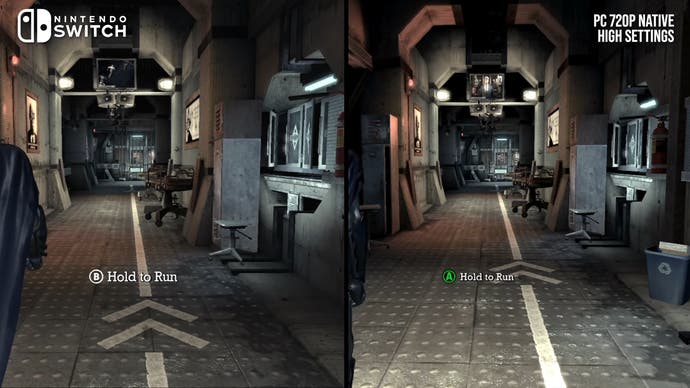
In terms of basic visual settings then, neither one of these seventh-gen conversions is in especially bad shape - but performance is unusually poor, with Arkham Asylum faring especially badly. The game often drops below its 30fps target, hanging in the mid-20s for extended periods with some frame-time inconsistencies that seem unrelated to overall performance.
Arkham Asylum just doesn't feel good to play in this form, and I don't understand why this title is running so poorly considering its 2009 vintage and its cramped indoor setting. Weirdly though, in portable mode Asylum seems to run substantially better, though it still drops frames.
Arkham City also has issues. This title suffers from frame-rate dips too from time to time, especially in broad views of Gotham City or during combat sequences, with one-off dropped frames or frame-time wobbles. The experience is more consistent overall than Arkham Asylum, and decent stretches of the game do run at 30fps with portable mode feeling about the same.
Unfortunately, two almost passing ports out of three don't allow for even the smallest of recommendations.
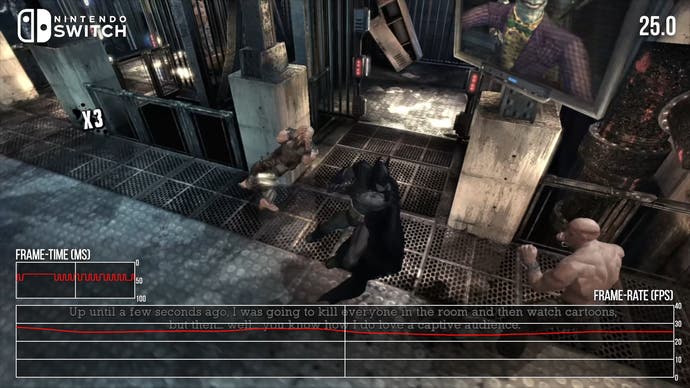

Batman: Arkham Knight on Switch is simply the worst performing software I have reviewed to date at Digital Foundry. It's in an unacceptable, unsaleable state, with maddening frame-rate issues and massive hits to visual quality that strip the game of its character and leave it looking unfinished. It's nothing like some of the more elegant eighth-gen Switch conversions we've seen from other developers, and fails to meet basic standards for playability.
The dire results here are sort of understandable, given Arkham Knight's visual quality and heavy customisation around the capabilities of last-gen home consoles - but if this was the best result that could have been reasonably achieved, it simply shouldn't have been ported.
The other two titles do fare better, but they aren't as good as I expected. Both titles have their own performance issues, with Arkham Asylum in particular suffering from prolonged frame-rate tumbles. For games that originated on the 360 and PS3, the results are sub-par at best.
At this point, I have to mark the Batman: Arkham Trilogy as a failure. None of the games here live up to expectations - and Arkham Knight is just atrocious.










